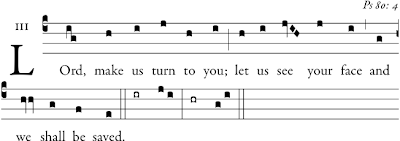It’s been an interesting couple of years in our merged parishes. A sesquicentennial of our Mother Church, the founding of our fourth parish, too much to recall in a sitting. That’s primarily why I haven’t been keeping up with my ruminations here; lot’s of bowling pins to keep juggling and life keeps adding to their number!
But this found its way into my emailbox this week.
Thank you, Lord. Thank you, young lady. Amen.
Dear Charles,
I am a 19 year-old (some-what) ‘revert’ to the Catholic Faith. Along with certain truths, music has played a big part in bringing me back to a traditional faith with such inherently beautiful worship as we “join with the choirs of angels and saints’”singing in the heavenly liturgy. I have wanted to thank you many times after Mass for displaying music in such a lovely way. My friends and I went to the Mozart Requiem at St. Mary’s last year, and we would all like to extend our gratitude for that also…our souls were suffocating with near satisfaction.
I grew up going to Masses which either had no music at all or contemporary music during liturgy. The worship music never seemed to match up with God’s heavenly character, but was (seemed) accommodated anthropomorphically to us parishioners. Human taste somehow had won over Heavenly taste, sadly. I later attended our local Christian high school (Reformed Protestant) and lost more respect for ‘worship’ as modern music was rarely about God, but was about ‘me’ and ‘my’ entertainment. I was filled with selfishness and lost Christ amid of this ‘rock and roll’.
As I sought out faith, I was recommended to attend Masses for which you were responsible for music ministry. Since then, I have been felt a greater resistance towards modernity in worship music (which is) music that (frankly) I can turn on in my car and hear out of the radio anytime. Not only did I meet more Catholic genuineness and adherence at these Masses, but my soul was in tune with Christ just as the music was. I believe many people can owe this ‘in-tuned’ experienced to people like your choir members and musicians who uphold our traditions.
I soon left for college in Fresno, where my roommates and I took Music Appreciation and fell in love with classical music and realized that the beautiful history of music of the West was founded within the Catholic Church. Our Fresno parish had Traditional Latin Masses with Gregorian chant, and this music uplifted our souls and strengthened our worship of our Lord and our relationship with Him (as He is other-worldly, like the almost supernatural music He has given inspiration to the musical arts within the Catholic Church over the centuries. I don’t think anyone objects that traditional music deepens the beautiful mysteries of Christ and our faith. Perhaps this is why I loved my last couple of Christmas and Easter seasons more than ever…as your parishes’ music direction even freely and more so captured these mysteries.
I became very worried when I came back to Visalia for the summer and present time (for I’m preparing to attend a Catholic college next year) and found a predominance of modern music at our new church. I was very saddened but have recently been giddy with joy as I’ve found that most of the Masses have not distanced themselves from our beautiful worship. I’ve attended the peaceful 6:30 am Masses, and for the first time ever…the 8:00am alternating Gregorian chant masses at Holy Family. It has been wonderful and I thank you and all those working to sustain this lovely aspect of the Mass. I also thank you for taking time occasionally before the Masses to explain our role in singing and worship, particularly since we are facing some changes in the Missal language this month.
I attended the recent Vigil Mass at St. Mary’s for All Saint’s Day. This was by far one of the best experiences. The congregation seemed in awe of the heavenly music coming forth from the loft. After mass, the attendants were raving about such beautiful music and thanking Father and the ushers on the way out; the ushers also said “we have also never heard the music and responses sung this way…this was the first we’ve heard it…absolutely beautiful…etc.” It was obvious that everyone was simply moved by the music and it complimented our experience of Christ in the Eucharist greatly!
My soul has simply been reveling in the music sung in concert with the angels and saints; I must express my appreciation for this (and on the behalf of others as well). Obviously, the Mass has innate beauty as it is the heavenly liturgy centered on Christ. It will always be beautiful as Christ is Present. But the traditional music compliments this so much. It is easy to distinguish God-given music that transforms the soul, from man-made music meant to stir the emotions. I am aware that the contemporary movement is meant to appease my age group, but my roommates and I argue that worship of God must be as far away from our generation’s music, for then there is distinction. We go to mass to meet something different. The problem is when we can’t distinguish worship from a concert! I’m glad that the traditional music gives me no reason to think ‘I should just sing to Christ in my car and at home”. For I meet Christ more deeply at traditional types of Masses rather than ‘taking the Mass into my home’. I’m praying that people like you advocate for us and not urge taking ‘normal modern music’ of the secular society into the ‘heavenly tradition-rich music’ of the highest Eucharistic worship in the Mass. Thank you for preserving this musical tradition at the Church of Visalia, as much as you have. I wish you a wonderful week and will keep you in my prayers!
Sincerely in Christ,
Marisa ________








